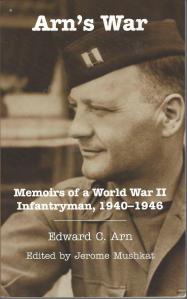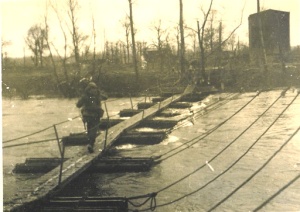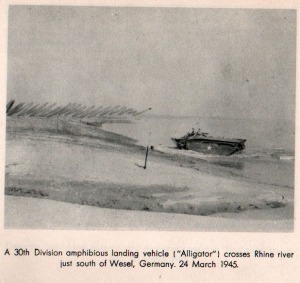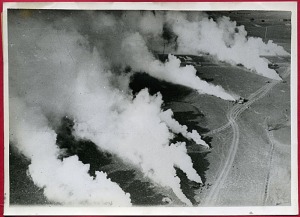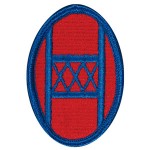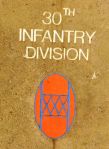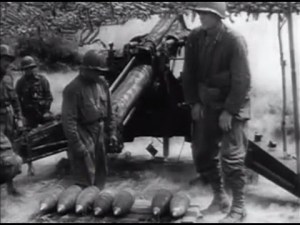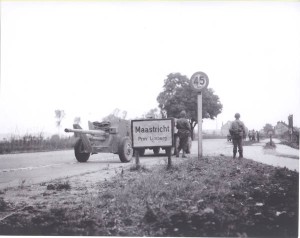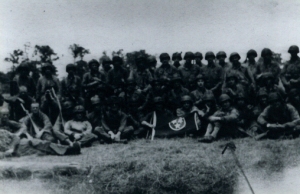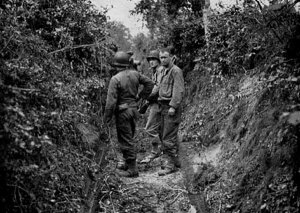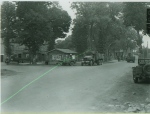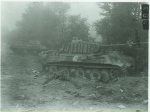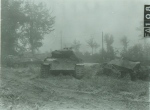With this post I will finish my series of posts on the exploits of the 30th Infantry Division during World War II. I have been distracted by other events in my life (like selling my first novel). Nevertheless, I need to bring their story to a conclusion and, in doing so, tell of some interesting occurrences during the last days of the war.
After crossing the Rhine River on March 24, 1945, the 30th pushed into the heart of Germany. By the 28th, the 8th Armored Division passed through their lines and the mission of the 30th was to follow behind and mop up. After Dorsten fell on March 29, XIX Corps took command of the 30th. By April 1, Old Hickory was reassigned to following the 2nd Armored Division on a long road march eastward towards Berlin. Before them lay the Teutoberger Wald, the place where the Germanic tribal chief, Hermann, defeated the Roman legions of Varus in 9 AD. The 2nd Armored Division left the Autobahn, which veered north at this point, and crossed the long ridge of the Teutoberger Wald with the assistance of the 30th. A German Officers Training School aided regular troops to resist the Americans in the rough, steep, heavily forested terrain. They tried to take a stand on Monument Hill, the site of the Hermannsdenkmal (the statue commemorating famous battle), but Old Hickory defeated them.
On April 7th the 117th Regiment cleared Hamelin minus K Company who had been left behind to guard an Allied Prisoner of War camp. During the advance the 30th took over an assortment of installations, including airports, hospitals, training camps and German research facilities. All had to be guarded in addition to the thousands of German prisoners. Feeding the prisoners, freed POWs and slave laborers fell to the military which was unprepared to care for such numbers.
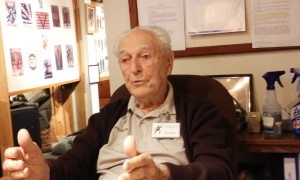
The 30th’s next objective was Brunswick. The German commander, General Veith, called for a truce to negotiate a surrender of the city, but after a meeting with General Hobbs, Commander of the 30th, the Germans refused the terms of “unconditional surrender.” The conference was only a delaying tactic to allow the German Army to escape. Fighting resumed almost immediately with the 117th Regiment attacking and the 120th moving into position to block escape from the city. By April 12 the 3rd Battalion of the 117th remained to mop up Brunswick while the remainder of the 117th along with the 120th pushed eastward toward the Elbe River. (The 119th was attached to the 2nd Armored Division at this time.)
After Brunswick fell, the 743rd Tank Battalion and infantry from the 119th Regiment were proceeding toward Magdeburg when they passed through the town of Farsleben. Lead elements found a long freight train stopped on the track. The Nazi guards attempted to flee from the Americans but were captured. The train had a full head of steam and was awaiting orders when the Americans showed up. It didn’t take long to determine that the old freight cars contained 2,500 Jewish prisoners who were being moved from Bergen-Belsen prison camp to some unknown location in the east. Problem was that the Russians were advancing from the east. The bridge over the Elbe had been destroyed and at one point the Nazis ordered the crew to drive the train into the river which would have killed all aboard. Shocked by their discovery the Americans could scarcely believe the condition of the prisoners. Frank Towers tells the story of the liberation of the train and the following events in a section of the book “The Fighting 30th Division – They Called Them Roosevelt’s SS” by Martin King, David Hilborn and Michael Collins. You can also watch and listen to Frank Tower’s account of the incident in an interview by University of Florida oral history program on YouTube.
Although the 30th Infantry Division had been issued maps through to Berlin, the order came down that they were to take Magdeburg and stop on the banks of the Elbe River. The Russians would proceed from the east and the two allies would meet at the Elbe. Many in the 30th were disappointed at not getting to push on into Berlin.
Magdeburg appeared an easy task. There were hopes of a surrender but when men went in to discuss it with the German commander they found him either unwilling or unable to surrender the city. Before the attack by both the 30th Infantry Division and the 2nd Armored Division, bombers unloaded on the already damaged city. Within twenty-four hours Magdeburg was cleared. It was April 18, 1945.
With orders to hold at the Elbe, Old Hickory’s fighting in Europe came to an end. While they waited for the Red Army and the German surrender, which finally came on May 8, 1945, the 30th occupied the area and took 7,468 prisoners. Some crossed the river to escape being captured by the Russians. All along the line the large numbers of surrendering German soldiers became a burden on the Allies to feed and house. In addition, there were thousands of freed slave laborers and liberated prisoner of war camps to deal with. Contact with the Russians came on May 4th.
Old Hickory moved south from Magdeburg to Thuringia and assumed occupation duty after the surrender. Near the end of June, the 30th learned they had been chosen for redeployment to the Pacific Theater. Their orders would carry them home, to the United States, to prepare for the invasion of Japan. Those individuals with enough points to be discharged were transferred primarily to the 76th Infantry Division with lower point individuals from the 76th moving into the 30th to replenish its ranks. These transfers due to points often explain why a veteran’s discharge papers show him in a different division from the one he fought with.
In July, the 30th moved across Europe to Camp Lucky Strike near Le Havre, France. The bulk of the division crossed the channel to England to await shipment to the U.S. That’s where they got the news that Japan had surrendered August 15, 1945. The 119th Regiment had sailed from France on August 12 so they were at sea when word came. All the men of Old Hickory let out a sigh of relief. Their fight was over. On Aug. 16th the division boarded the Queen Mary and sailed for home where the 30th Infantry Division was deactivated on November 25, 1945. The 30th Infantry Division left a glorious record of bravery, hard fighting and sacrifice in which we can all take pride.
